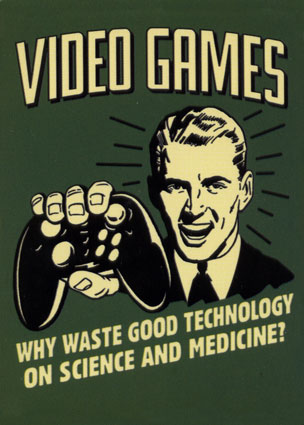Technology had greatly advanced since the first email was sent in 1971 or earliest mobile telephone call made two years later in 1973. Many would argue that one of the most popular creations was a result of the Nintendo games console launched in 1985, with 2008 statistics revealing that the average child aged 8 to 12 plays a staggering 13 hours of gaming each week. Countless individuals view this development in digital media as a negative trend responsible for ‘dumming down’ and socially isolating young people. A scientific study conducted by Anderson and Bushman in 2001 indicated that children regularly playing violent video games are more liable to having increased aggressive feelings, thoughts and behaviours.
Jenkins (2006) writes in his book on convergence culture, “the 1990’s, rhetoric about a coming digital revolution was going to push aside old media, that the Internet was going to displace broadcasting, and that all of this would enable consumers to more easily access media content that was personally meaningful to them.”
The revolution certainly began as predicted in 1991 with the launch of the World Wide Web, a “network of pages of images, texts and sounds on the Internet which can be viewed using browser software” (Boles 2008). Early browsers of the fantastic innovation consisted predominantly of physics laboratories and university-based scientific departments although by 2000, 361 million were accessing the web. Today there are over 1650 million using the Internet with a growing interest from the elder and retired population.
Many would feel that the Internet has enriched their lives, with the ability to source knowledge, provide entertainment and develop our capability to participate in two way communication, conversing and interacting with others. Recent statistics reveal that the majority time spent online is on social media sights such as Facebook, Myspace and Twitter. Another innovation to change millions of lives was the creation of online dating. Shutz (2006) discusses our need for control and affection form social media. How many of you have turned to Facebook when feeling low and in need of conversation or distraction? The Internet also allows for personality or identity exploration. With a social media account, you can be anybody you want to be and although sometimes dangerous, for many it is an ideal form of escapism.
Understanding how and why people use the Internet can assist organisations to apply effective Public Relations strategies to help target specific audiences. For example Pixar and Disney created a viral video alongside traditional forms of Advertising such as billboards and banners for the promotion of Toy Story 3. The video relied on nostalgia of their complete demographic and was extremely successful, not just at targeting children, but adults reminiscing about childhood toys and memories. A Facebook application was set up so that people could connect and share news streams after purchasing a ticket for the film. In addition to this, the catchy tag line “the whole idea is that no friend gets left behind” was created to be memorable and add imagination.
Another way that social media can be implemented to enhance communication is if a company cannot afford travel expenses to send a colleague or client over seas, Skype could be used for a video conference meeting. Although I find this interactive technology is best for catching up with distant friends.
However there is still only 30% of the world’s population accessing the Internet. This brings us on to the topical question, how do we reach the other 70% with many living in unindustrialised countries?



No comments:
Post a Comment